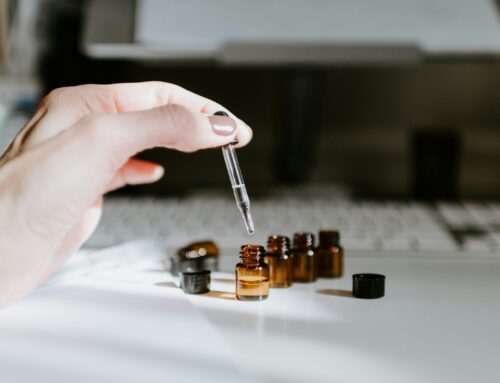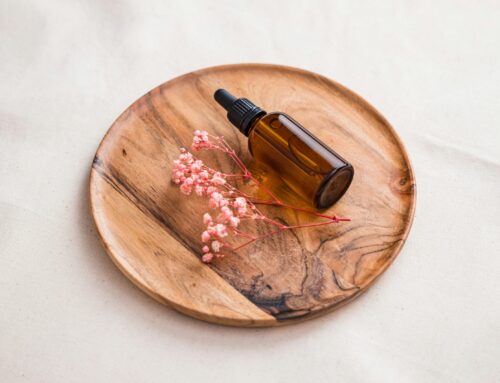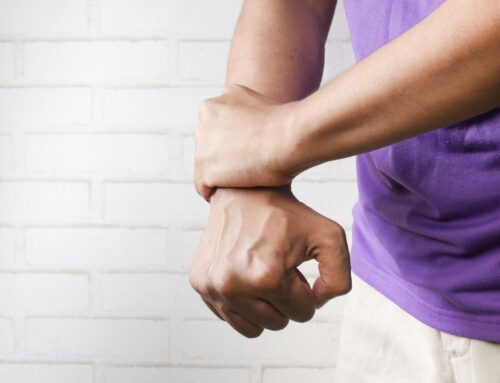In my practice at Duquessa-Holistic, I constantly seek effective tools to ensure a comprehensive treatment plan for my patients. The Epworth Sleepiness Scale (ESS) has emerged as an invaluable resource, particularly when evaluating patients for alternative therapies, including cannabinoid prescriptions. This educational blog explores the pivotal role of the ESS in our holistic healthcare approach.
The Epworth Sleepiness Scale is a simple, self-administered questionnaire designed to measure a person’s general level of daytime sleepiness. By asking individuals to rate their likelihood of dozing off or falling asleep in various everyday situations, the ESS provides a quantitative measure of sleep propensity during daylight hours. This becomes critically important in understanding patient health, as excessive daytime sleepiness can be an indicator of underlying disorders such as sleep apnea, insomnia, or other sleep-related conditions.
In the realm of holistic healthcare, recognizing the root cause of sleep disturbances is crucial. Alternative therapies, particularly cannabinoid prescriptions, require a nuanced understanding of an individual’s overall well-being. Herein lies the value of the Epworth Sleepiness Scale. By quantifying a patient’s daytime sleepiness, we can better ascertain the extent to which sleep disturbances may be contributing to overall health concerns. This is particularly pertinent when considering the prescription of cannabinoids, as they can have varying effects on sleep patterns and quality.
For instance, certain cannabinoids may improve sleep quality or help regulate sleep cycles, but they may not be suitable for all patients. Through the ESS, if excessive sleepiness is linked to a specific health issue, alternative treatments can be tailored to address not just the symptom of sleepiness, but also its root cause, thereby promoting a more holistic approach to patient health.
Moreover, contrasting the results of the Epworth Sleepiness Scale with other health assessments and diagnostic tools enables a more comprehensive evaluation. This approach ensures that when prescribing alternative therapies, such as cannabinoids, we do so with a full understanding of each patient’s unique health profile. It allows for an informed decision-making process, taking into account the potential benefits and risks associated with such treatments.
In conclusion, the Epworth Sleepiness Scale offers a vital insight into patient well-being, serving as a cornerstone in the evaluation process for alternative therapies. In my practice, it is not just about identifying symptoms but understanding the interconnectedness of a patient’s health conditions. By doing so, we can provide targeted, effective, and, most importantly, safe treatment plans that genuinely reflect the holistic principles underpinning our work at Duquessa-Holistic.
The Epworth Sleepiness Scale (ESS) is a self-administered questionnaire designed to measure a person’s general level of daytime sleepiness. By asking individuals to rate their likelihood of falling asleep in various everyday situations, the ESS helps healthcare providers, including nurse practitioners like myself, evaluate the severity of a patient’s sleepiness.
Understanding the ESS Scores:
– 0 to 5: It indicates an unlikely chance of dozing off in daily activities. This score range is often considered within the normal spectrum of daytime sleepiness.
– 6 to 10: Represents a normal level of daytime sleepiness for most people. While not alarming, it’s essential to monitor any changes or impacts on daily life.
– 11 to 12: This range indicates mild sleepiness. It suggests that sleepiness is more likely to impact daily activities and requires further investigation.
– 13 to 15: This score signals moderate sleepiness, indicating a significant impact on daily life. It may necessitate lifestyle changes or further medical evaluation.
– 16 to 24: Severe sleepiness. Scores in this range are a clear indicator that the individual’s daytime sleepiness is likely affecting their daily activities, safety, and quality of life, warranting immediate medical attention.
Considerations for Cannabis as an Alternative Therapy:
As a nurse practitioner, when I evaluate the suitability of cannabis for sleep-related issues, it’s crucial to consider:
– Individual ESS Scores: High scores might indicate underlying sleep disorders such as sleep apnea, where cannabis could potentially exacerbate the condition due to its effects on sleep architecture and breathing.
– Underlying Health Conditions: Patients with certain conditions or on specific medications may experience adverse interactions with cannabis.
– Potential for Dependency or Misuse: Individuals with a history of substance misuse may require careful consideration before prescribing cannabis-based therapies.
Suitability for Cannabis Therapy:
– Low to Moderate Sleepiness (Scores 0-15): Patients might be suitable for cannabis therapy if their sleepiness impacts their quality of life, and other treatments have been ineffective or not well-tolerated. However, the consideration of the full clinical context is crucial.
– Severe Sleepiness (Scores 16-24): Caution is advised. In patients with severe sleepiness, it’s essential to first identify and treat underlying causes. Cannabis may not be suitable for individuals where sleep disorders could be exacerbated by its use.
In prescribing alternative therapies like cannabis, it is vital to adopt an individualized approach. This involves carefully weighing the benefits against potential risks, considering the patient’s overall health profile, and closely monitoring for effectiveness and any adverse effects. Collaboration with sleep specialists or other healthcare professionals may also be beneficial in complex cases, ensuring a holistic and patient-centered care approach.
Embracing the Brief Pain Inventory in Comprehensive Care Plans at Duquessa Holistic
As a dedicated nurse practitioner at Duquessa Holistic, I deeply understand the multifaceted nature of pain and its profound impact on our patients’ lives. Pain is not merely a symptom but an experience that affects individuals physically, psychologically, and socially. It’s with this understanding that I incorporate the Brief Pain Inventory (BPI) assessment tool into my practice, especially when considering the compatibility of alternative therapies like cannabis in a patient’s treatment plan.
The Power of Precision: The Brief Pain Inventory
The Brief Pain Inventory is a scientifically validated tool that offers a comprehensive understanding of a patient’s pain. By evaluating both the intensity of pain (through questions on pain at its worst, its least, on average, and right now) and the impact of pain on the patient’s daily functions (including general activity, mood, walking ability, work, social activities, and relationships), the BPI allows us to grasp the full spectrum of how pain is influencing an individual’s life.
Why the BPI Matters in the Context of Alternative Therapies
Integrating the BPI into our assessment process serves multiple purposes. First, it provides a quantitative measure of pain, which is invaluable in creating a baseline against which we can measure the efficacy of treatments over time. Secondly, by understanding the nuances of a patient’s pain and its implications on their day-to-day life, we can tailor alternative therapy options more effectively. Cannabis, for instance, may offer substantial relief for some patients, but it’s not a one-size-fits-all solution.
Cannabis has shown promise in managing certain types of pain, including neuropathic pain and chronic pain, where traditional medications may not have been fully effective. Its role in reducing inflammation and modulating pain perception makes it a consideration for some patients. However, as a nurse practitioner, I must weigh the benefits against the potential risks. Components such as THC and CBD can affect individuals differently, and factors like the patient’s psychological state, history with substance use, and the potential for side effects require careful consideration.
Who May Not Be Suitable for Cannabis as an Alternative Therapy?
While the therapeutic potential of cannabis is undeniable for some, it isn’t suitable for everyone. Through the lens of the BPI and a comprehensive assessment, patients who may not be ideal candidates for cannabis include those with:
– A history of substance misuse or dependence.
– Significant mental health disorders, especially if symptoms could potentially be exacerbated by cannabis use.
– Certain medical conditions where the use of cannabis could introduce risks or interact with existing medications.
The role of the BPI in our assessment process cannot be overstated. It enables a nuanced approach to understanding pain, opening the door to personalized treatment plans that consider the entirety of a patient’s condition and lifestyle. At Duquessa Holistic, it’s our commitment to employ such tools to ensure that when we consider cannabis or any other alternative therapy, it is with the intent to enhance our patients’ quality of life in the most safe and effective manner possible.
Navigating the journey of chronic pain management is complex, and the decision to incorporate alternative therapies like cannabis into a treatment plan is made with careful deliberation. At Duquessa Holistic, the Brief Pain Inventory is a cornerstone of that process, ensuring that we’re not only treating pain but nurturing the overall well-being of our patients.
The Brief Pain Inventory (BPI) is an invaluable assessment tool we use at Duquessa Holistic to gauge the intensity of your pain and the extent to which it affects your daily functions. This tool allows me, as your nurse practitioner, to capture a comprehensive snapshot of your pain experience, guiding us in tailored care planning, including the consideration of alternative therapies such as cannabis. Here’s how we interpret your BPI results and what they mean for your treatment:
Understanding Your BPI Scores:
The BPI measures pain severity on a scale from 0 to 10 across four items: pain at its worst, least, average, and right now. Additionally, it assesses the impact of pain on seven daily aspects: general activity, mood, walking ability, normal work, relations with other people, sleep, and enjoyment of life, also on a scale from 0 to 10.
– Scores 0-3 (Mild Pain): Indicate mild pain that is manageable and has minimal impact on daily activities. Patients with scores in this range may benefit from lifestyle modifications, physiotherapy, or over-the-counter pain relief. In some cases, low doses of alternative therapies, including cannabis, may be explored to enhance quality of life.
– Scores 4-6 (Moderate Pain): Reflect pain that significantly affects daily life and requires more active management strategies. For patients in this range, a combination of pharmacological treatments and alternative therapies like cannabis may be considered to manage symptoms effectively and improve functionality.
– Scores 7-10 (Severe Pain): Indicate pain that is highly debilitating and interferes substantially with quality of life. In these cases, a comprehensive treatment approach is critical, including advanced pain management strategies. The use of alternative therapies such as cannabis may be carefully considered, balancing potential benefits against risks, especially in patients for whom conventional pain treatments have been ineffective or caused significant side effects.
Patient Suitability for Cannabis Therapy:
When assessing the suitability of cannabis as a complementary therapy, several factors must be considered:
– Pain severity and impact: Patients with moderate to severe pain that significantly impairs their quality of life may be candidates for cannabis therapy, especially if conventional treatments have failed.
– Overall health and existing conditions: The presence of certain health conditions or a history of substance misuse may indicate that cannabis is not suitable for some patients.
– Medication interactions: The potential for cannabis to interact with current medications is carefully evaluated to avoid adverse effects.
– Patient preference and lifestyle: The decision to include cannabis in a treatment plan is made collaboratively, considering the patient’s lifestyle, preferences, and concerns.
At Duquessa Holistic, our goal is to enhance your well-being through personalized, holistic care plans. Understanding your BPI scores is a crucial step in determining the most effective, balanced approach to managing your pain, including the potential for incorporating alternative therapies such as cannabis.








